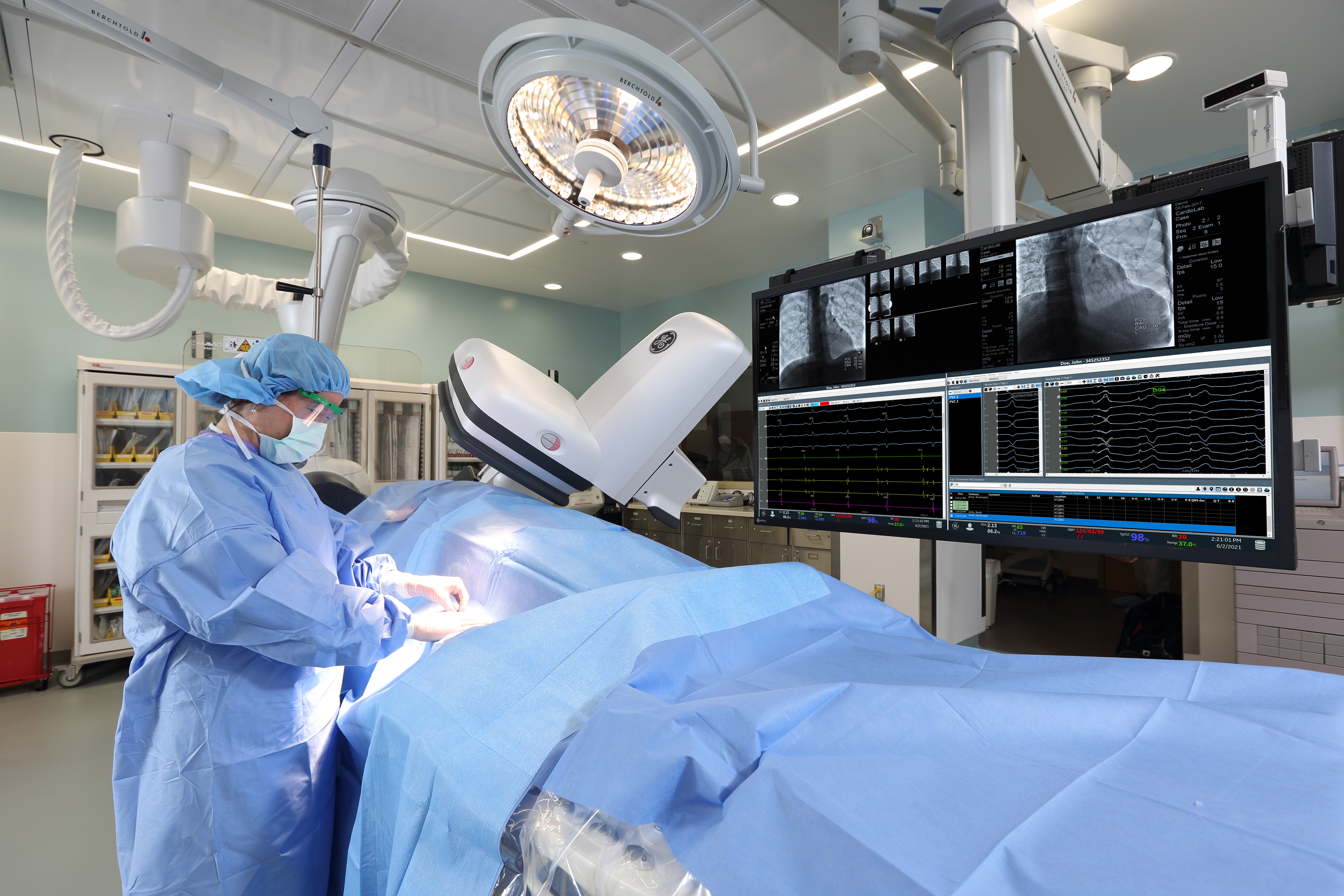Within the umbrella of cardiovascular disease, Atrial Fibrillation, often called AFib or AF, is the most common heart rhythm disorder - affecting millions of people worldwide with indications that the prevalence of AFib could increase in the years to come.[1]
While there are different types of heart arrhythmias, AFib occurs when the upper chambers of the heart and lower chambers are not coordinated, causing the heart to beat irregularly. While the heart’s electrical system controls the timing of the heart’s contractions and how the heart pumps blood through body; if someone has an irregular heartbeat, blood may not properly pump through the body - leading to clots – which can cause a stroke or lead to heart failure.
Signs of AFib symptoms can vary – some people may feel no symptoms at all; others may feel overtired, have shortness of breath, feel heart palpitations, have chest pain, or discomfort, or feel dizzy and lightheaded. Symptoms can also happen in brief episodes or be continuous and persistent.
If these kinds of symptoms are present, there are several ways to determine a diagnosis – including a simple electrocardiograph (ECG/EKG) test that can be done in a doctor’s office.
The longer a person living with AFib is out of rhythm, the more difficult it is to treat and the more dangerous it may become. But if caught early, rhythm control treatment can reduce AFib recurrence and potentially prevent progression.[2]
Based on personal signs and symptoms, there are many different ways to treat AFib. One common treatment option is a catheter ablation performed by an electrophysiologist (EP) physician. The goal of this less invasive procedure is to eliminate the irregular heartbeat (arrhythmias) by intentionally scarring the heart tissue to block the irregular electrical signals.
To begin the procedure, small punctures are made in the groin, arm, or neck area, and thin, flexible tubes, called catheters, are inserted, and threaded into the heart under a fluoroscopic technique using X-ray guidance. The catheter’s tip is then positioned to ablate tissue around the sources of erratic electrical signals, often involving the pulmonary veins for example, that are causing the irregular heartbeat. The catheter then uses thermal energy, such as radiofrequency energy (intense heat) or cryotherapy (intense cold), to create a lesion of scar tissue to block unwanted electrical signals. The scarred tissue, or conduction block, stops the erratic electrical signals from traveling through the heart helping to restore the heart’s normal rhythm and to reduce the symptoms of Afib.
Electrophysiology labs play a pivotal role in the diagnosis and treatment of cardiac arrhythmias and require sophisticated recording systems to capture and analyze intracardiac signals accurately.
With its robust ecosystem encompassing interface to mapping technologies, GE HealthCare’s Prucka™ 3 with CardioLab™ EP recording system helps provide accuracy, efficiency, and advanced analytics for the diagnosis and treatment of abnormal cardiac arrhythmias.
Living with AFib can take a toll on patients, but the ongoing evolution of treatment for this disease has helped provide AFib patients the opportunity to make informed decisions in consultation with their physicians regarding what treatment plan is best for them.
GE HealthCare remains committed to providing clinicians and patients the tools they need to aid in the treatment of Atrial Fibrillation disorders (AFib).
Know the signs and consult your doctor if you are hearing or experiencing an unusual heartbeat or a rapid heart rate.
[1] Vinter N, Huang Q, Fenger-Grøn M, Frost L, Benjamin EJ, Trinquart L. Trends in excess mortality associated with atrial fibrillation over 45 years (Framingham Heart Study): community based cohort study. BMJ. 2020 Aug 11;370:m2724. doi: 10.1136/bmj.m2724. PMID: 32784208; PMCID: PMC7418071.
[2] Camm A, Naccarelli G, Mittal S, et al. The Increasing Role of Rhythm Control in Patients With Atrial Fibrillation. J Am Coll Cardiol. 2022 May, 79 (19) 1932–1948. https://doi.org/10.1016/j.jacc.2022.03.337.

